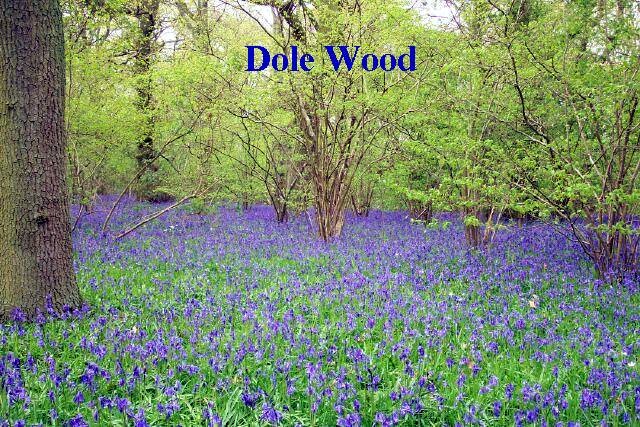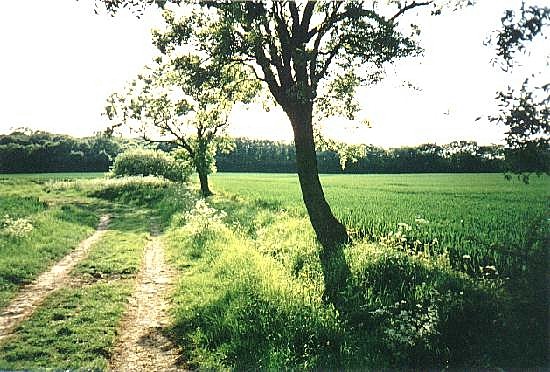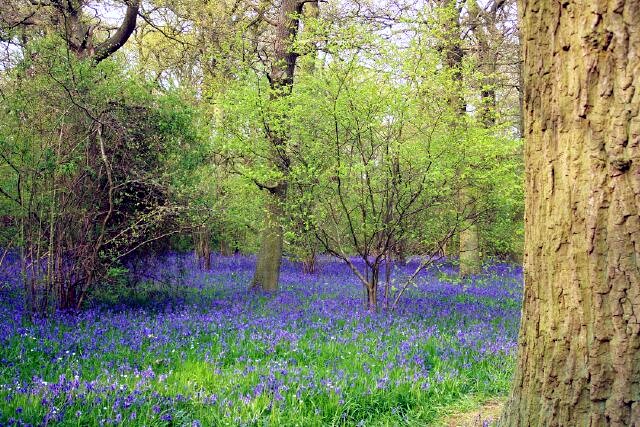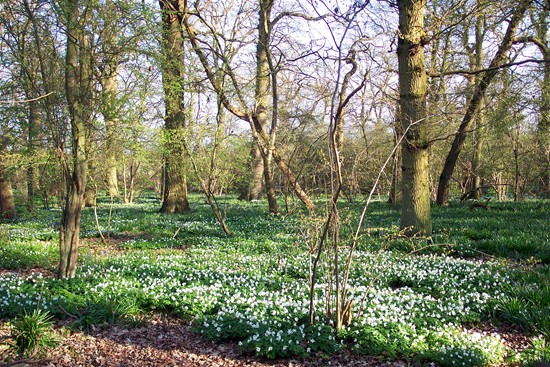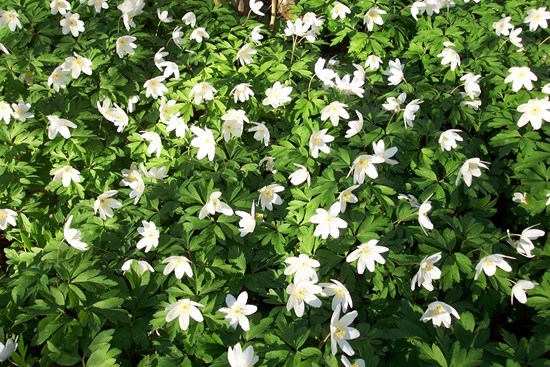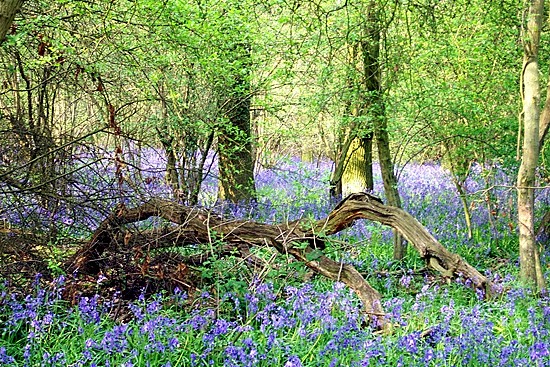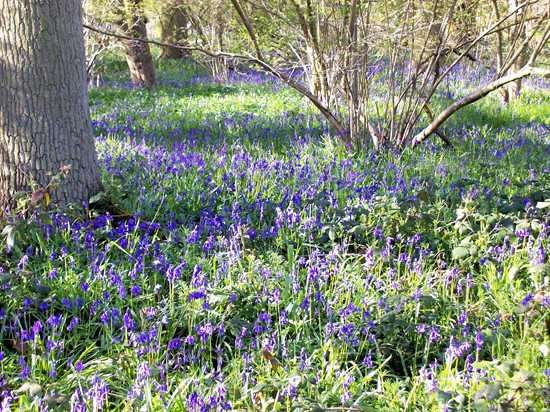|
A cart track leads to Dole Wood, a small surviving piece of ancient woodland amid a large tract of farmland on the outskirts of Bourne. This is one of the most attractive copses in the county and is managed by the Lincolnshire Wildlife Trust whose volunteers spend many hours maintaining the area and keeping the paths open for visitors. Bluebells carpet the floor in springtime followed by ramsons and ox-eye daisies and there is a wide variety of birds and small mammals. A circular route around the perimeter of under a mile enables the visitor to enjoy the delights of this small wood without disturbing the flora and fauna and once seen, it is inevitable that you will return.
It consists mainly of oak with hazel coppice but there are also ash, field maple, wych elm and wild service trees and both common and midland hawthorn can be seen in the understorey. Bluebell, wood anemone and stitchwort are the most abundant species in the ground flora but wood sorrel, wood sage, false brome, enchanter's nightshade, bugle, yellow archangel and sweet woodruff can also be seen. The birds to be found here include the lesser and great spotted woodpeckers, treecreeper, whitethroat, blackcap, willow warbler and spotted flycatcher. Over 120 species of moth have also been identified within the reserve. Management consists of bramble control, the re-establishment of a coppice rotation and the maintenance of some permanent glades.
It is generally accepted that the appearance of bluebells in profusion is a sign of ancient woodland and there is evidence that Dole Wood falls into that category. This copse is a remaining fragment of the extensive primary woodland cover of South Lincolnshire known as
Brunswald Forest that was uprooted in the cause of agriculture although oaks that grew in the vicinity may also have been cut down during the reign of Queen Elizabeth I to help build the navy that was deployed to fight the Spanish Armada. The clearance was continued in later centuries to provide more land for England's burgeoning agricultural industry but, ironically, we no longer have need for such intensive farming production and we cannot now bring back the forests that filled the rural landscapes of yesteryear.
See also Felling the oaks
Go to: Main Index Villages Index |
